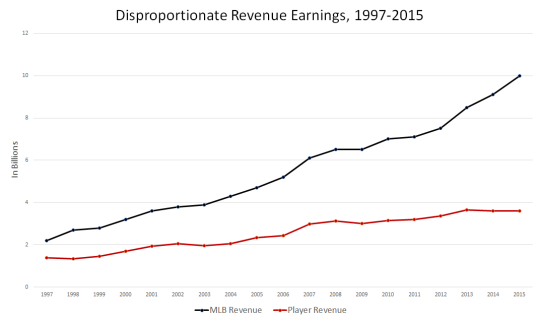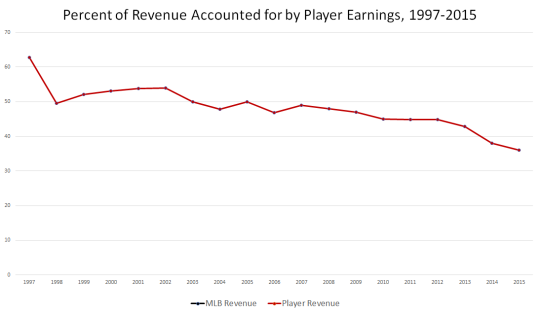Charlie Blackmon Goes Golfing
Baseball players have been known to have a fondness for golfing. After all, it’s just like baseball, except nobody’s trying to throw the ball past you. Famous baseball golfers include Yoenis Cespedes, John Smoltz, and, as we now know as of last Thursday, Charlie Blackmon.
I’ll be honest — I’ve never seen Charlie Blackmon step foot on a golf course before. His current facial-hair situation is also in violation of most country club dress codes. But after seeing what he did in his first AB against Zack Godley on Thursday, I’m convinced that Blackmon is already preparing to win the US Open after he retires from baseball.

Charlie Blackmon managed to hit a no-doubter off of a shoelace-scraper. It’s like a Statcast glitch in real life. I looked it up on Brooks Baseball to see where this pitch really was, and, well –
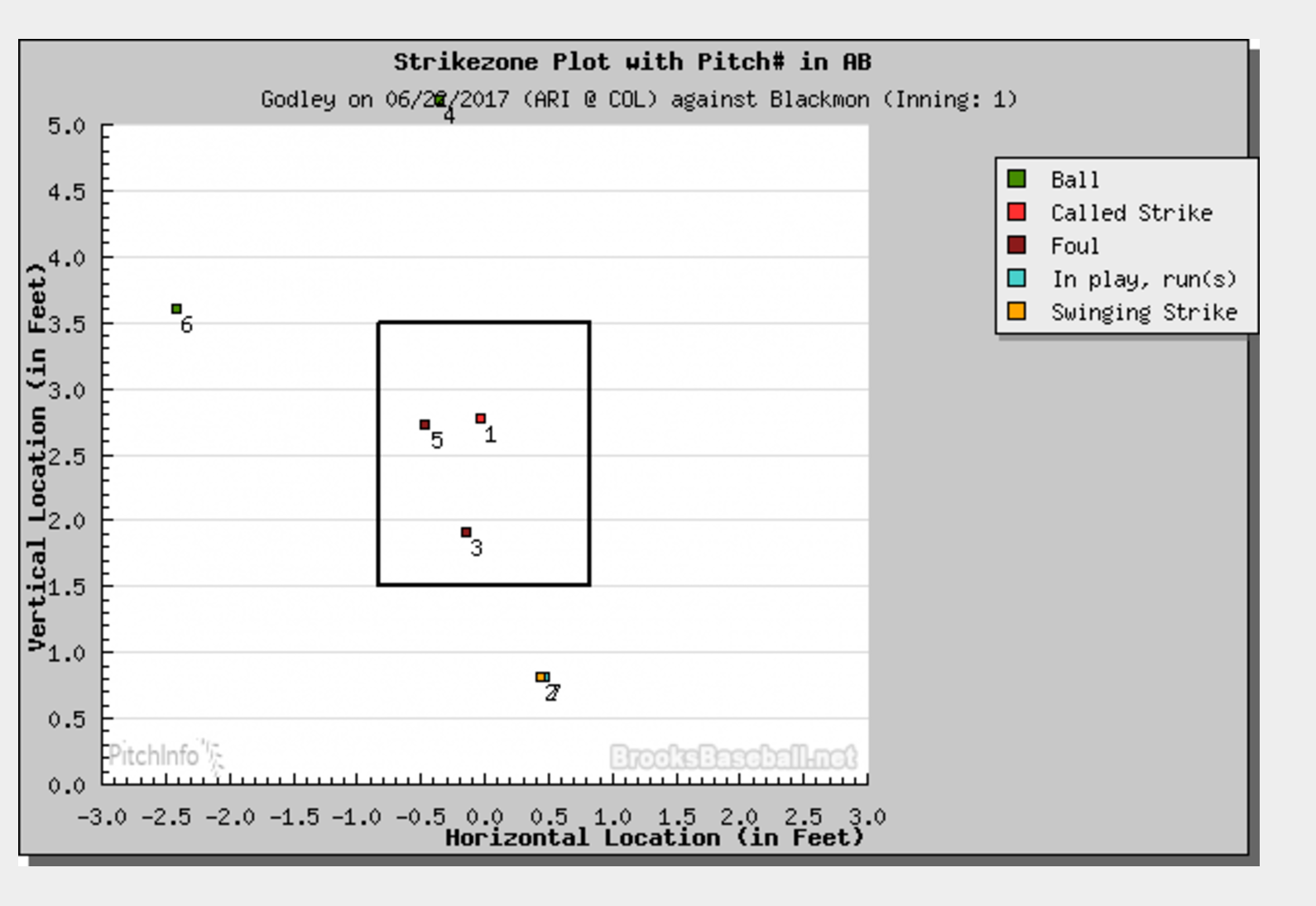
If you’re having trouble seeing the pitch, it’s because Godley threw the exact same pitch to Blackmon earlier in the AB (the #2 is covering the #7). The result the first time around was a swinging strike, as Blackmon went over top of it — as one would with a curveball in the dirt. Blackmon saw the exact same pitch later in the AB, and rather than take it, Blackmon decided to lift it over the outfield fence. Somehow, Blackmon managed to get under a pitch in the dirt. This pitch was .81 feet off the ground, via Trackman — if it was any more down, Blackmon would need a shovel to dig it out.
It’s no secret that players can golf pitches for home runs. Jonathan Hale of the Hardball Times showed that home runs significantly spiked on pitches that were thrown at a height of about one foot above the plate.
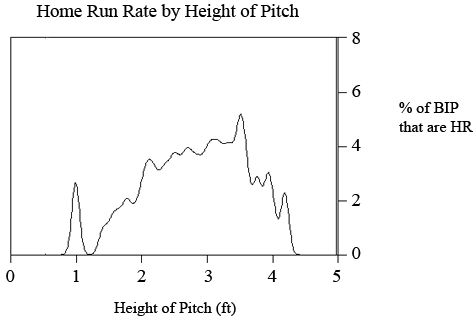
But there’s a very steep fall-off below that sweet-spot, mostly because baseball bats aren’t long enough to make contact below that point.
In order to make contact on this pitch, Blackmon needed to bend down on his back knee while keeping his front leg straight. Essentially, he needed to invent a new form of Yoga to drive this out.
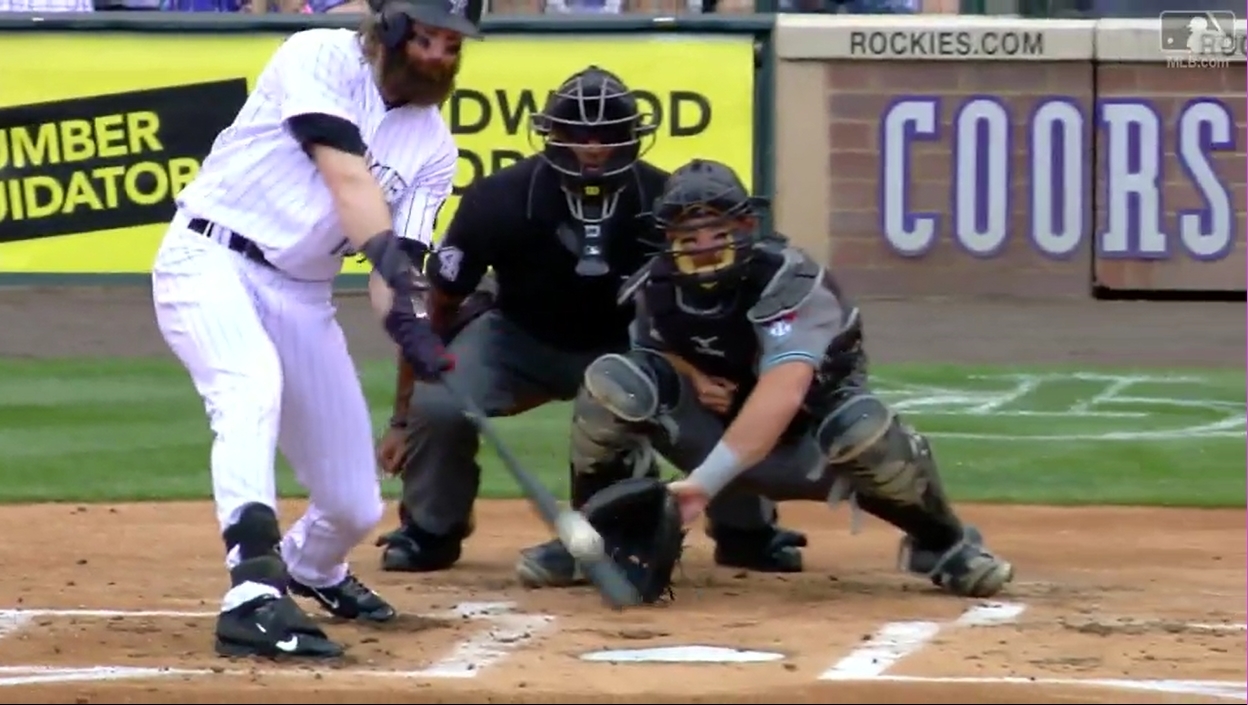
This is an amazing feat from one of baseball’s hottest hitters. And it’s possibly one of the lowest pitches EVER hit for a home run.
Baseball Savant keeps track of almost every data-point anyone could ever want on every pitch of the past 10 years, including vertical height, and only eight batters have ever hit home runs off of pitches that were less than a foot off the ground (there’s a fun glitch where this Chris Coghlan home run appears as the lowest pitch off the ground at -4.8 feet — evidently someone placed a negative sign in front of a 4.8 foot figure).
Coincidentally, Coghlan actually was present for the lowest pitch ever hit out, according to Baseball Savant. Brad Hawpe took a low pitch from Rick VandenHurk and put it way over Coghlan’s head, plating himself and Troy Tulowitzki.
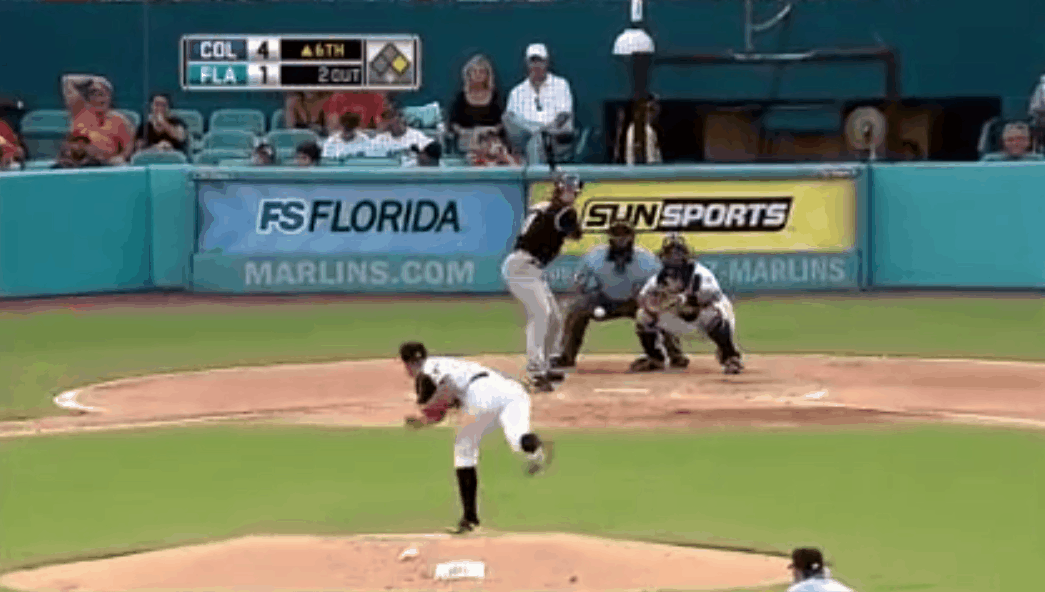
According to Baseball Savant, that pitch was hit when it was only ~5 inches off the ground, which makes it the lowest pitch ever hit out of the Pitchf/x era. But something’s a little fishy (and it’s not the Marlins) — at the moment of contact, the ball is clearly more than 5 inches off the ground. It’s certainly a low pitch, but it’s not quite at Hawpe’s ankles, unlike Blackmon’s pitch. Perhaps it’s a glitch from the early days of Pitchf/x.
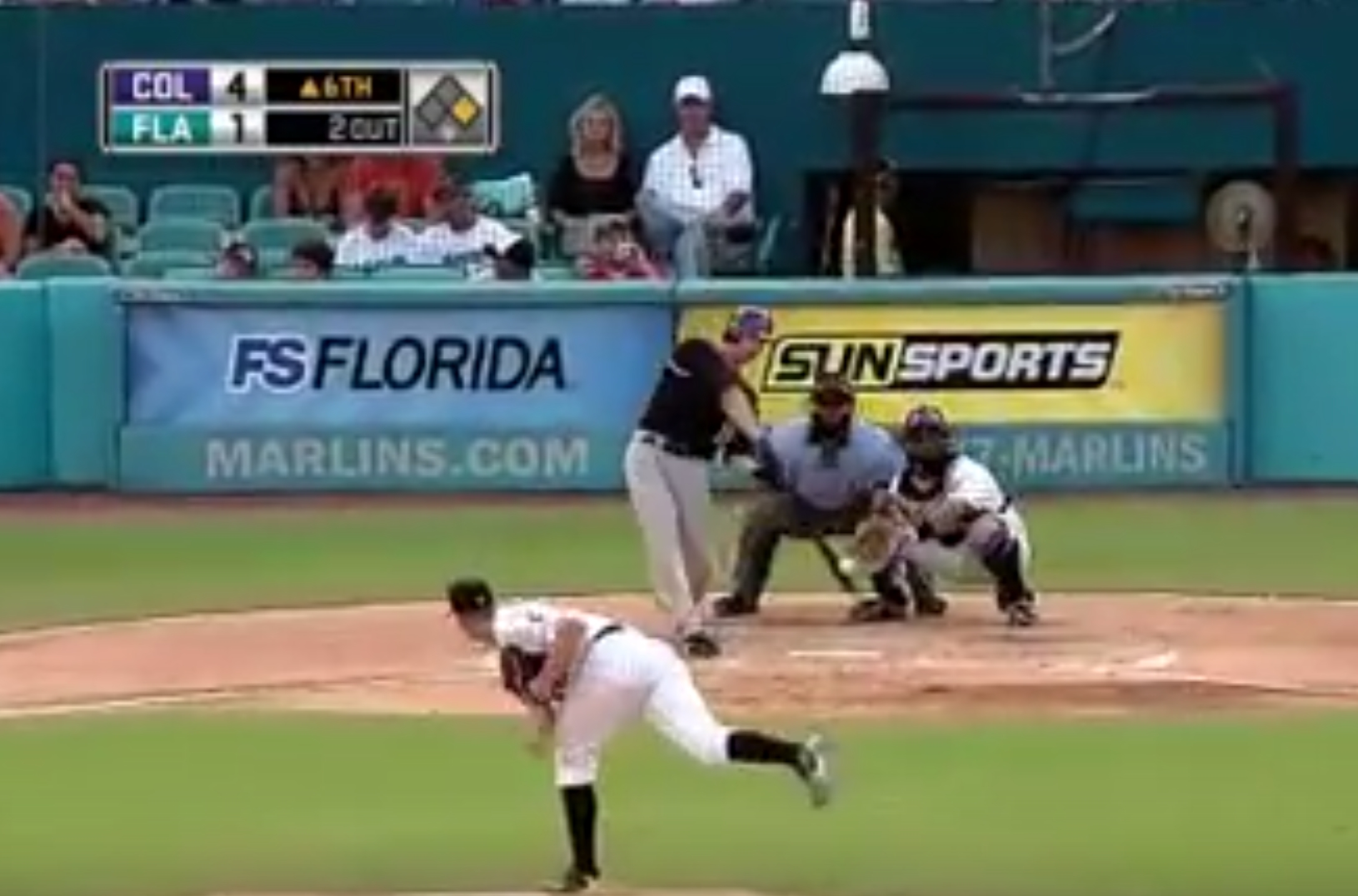
In fact, the same can be said of the second-lowest HR according to Baseball Savant — a pitch to Jonny Gomes at his knees is recorded as being 6 inches off the ground. It’s a reality of technology in that it’s not perfect every time.
The main takeaway, however, is that Blackmon might just have a legitimate claim to lowest-hit dinger of the past 10 seasons.
The biggest legitimate rival to Blackmon’s claim is probably Freddy Galvis‘ ankle breaker from 2013 against Jon Niese. Galvis adopts a similar approach to Blackmon in hitting this pitch, knocking one out at a height of only .81 feet off the ground. Pitchf/x appears to have this one right on the money — and it just so happens that it’s also the exact same height as Blackmon’s pitch was.
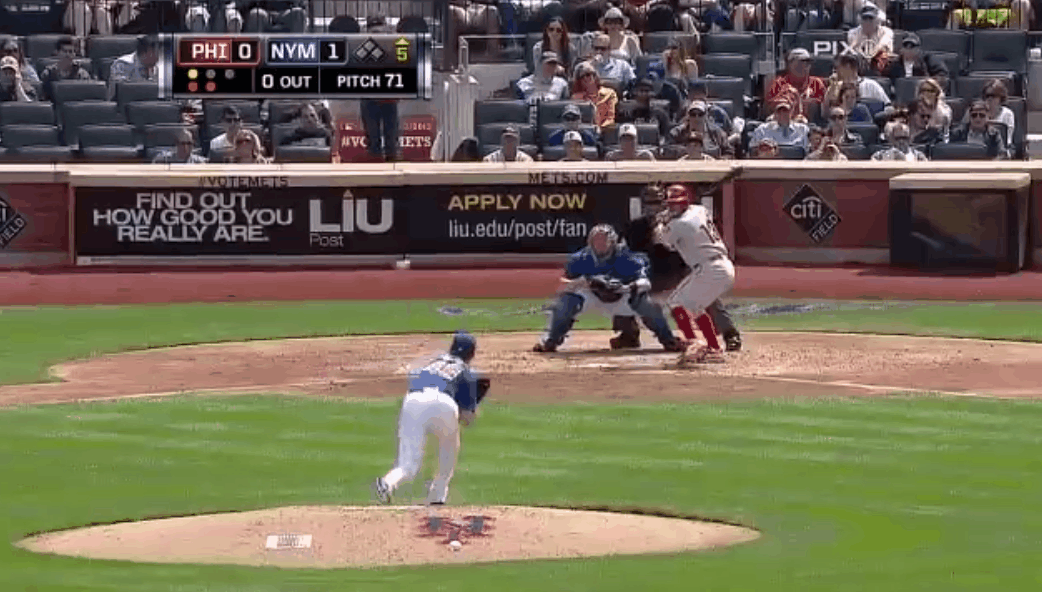
So, according to Pitchf/x, Blackmon hit the lowest pitch out since Galvis. What’s really impressive is that Blackmon is about 5 inches taller than Galvis, so Blackmon needed to screw himself into the ground about 5 inches more than Galvis.
It’s a testament to Blackmon’s new-found power (or the generous park factors at Coors Field) that Blackmon managed to turn on such a terrible pitch and turn it into a home run. The anomalous dinger gods have visited Blackmon, and we should be thankful that they’ve graced us with the gift of this home run — we might not see another like it for a few years.
